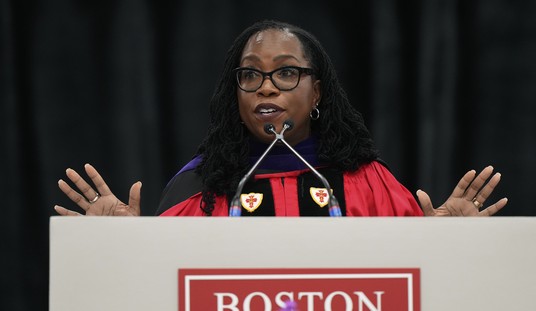
We’ll get to the image above in a just a moment. It was created to help promote the visionary space station proposals of scientist Gerard O’Neill in the mid-1970s, a glimpse of a hopeful, albeit technocratic future in the midst of an otherwise painfully long slog of a decade.
But first, let’s set the stage. In 1975, Pat Moynihan wrote, “Most liberals had ended the 1960s rather ashamed of the beliefs they had held at the beginning of the decade.” Their collective emotional depression — a malaise you might call it — was greatly exacerbated by the disparity between their dreams at the beginning of the 1960s, and the very different reality that emerged as they began to attempt to implement them.
As James Piereson noted at the beginning of “Lee Harvey Oswald and the Liberal Crack-Up,” the magnum opus 2006 Commentary article that served as the prototype for his book the following year, Camelot and the Cultural Revolution:
Liberalism entered the 1960’s as the vital force in American politics, riding a wave of accomplishment running from the Progressive era through the New Deal and beyond. A handsome young president, John F. Kennedy, had just been elected on the promise to extend the unfinished agenda of reform. Liberalism owned the future, as Orwell might have said. Yet by the end of the decade, liberal doctrine was in disarray, with some of its central assumptions broken by the experience of the immediately preceding years. It has yet to recover.
Along with the cognitive dissonance of the horrific death of JFK via a Marxist assassin, by 1968, liberalism was chastened by LBJ’s overreach. By 1966, he was attempting to simultaneously escalate JFK’s war in Vietnam and Kennedy’s small-scale anti-poverty programs to Texas-sized proportions. He also kept JFK’s vision of landing a man on the moon by the end of the decade on track. As Rand Simberg noted, LBJ was far from altruistic on this matter – he saw the space program as a sort of giant TVA project which would help modernize the south, and distribute plenty of money into his constituents’ coffers.
But even before Neil Armstrong landed on the moon, liberals of the era had begun to turn their back on Kennedy’s vision of the bold New Frontier – including JFK’s surviving brothers. Robert Kennedy’s 1968 campaign ads and campaign speeches had a very different tone that tacitly rebuked his brother’s optimism. The following year, Teddy Kennedy was more explicit. He was quoted in the New York Times on the day after Armstrong and Apollo 11 took off for the Moon, as saying, “The Apollo program is for landing a man on the moon and exploration and should take another one to two years. I think after that the space program ought to fit into our other national priorities.”
And that it would, quickly scaling back in the early 1970s. The moon missions concluded; followed by Skylab, which was perhaps best known for its disastrous launch in 1973 and its ignominious crash to earth six years later, rather than its actual manned missions, and the Apollo-Soyuz link-up, and then nothing. The Apollo technology was discarded, as NASA put all of its resources for manned spaceflight into the Space Shuttle, which Arthur C. Clarke would later write off as not even the DC-3 of space, but the “DC 1 and a half,” if I’m remembering correctly the phrase he used in an interview after the Challenger disaster.
Back on planet earth, by the beginning of the 1970s, what the Carter administration would describe at the end of the decade as a “malaise” that the 39th president and his fellow liberals suffered from was encapsulated in the 1972 book Limits to Growth, as Steve Hayward wrote in the first volume of The Age of Reagan:
[“Limits to growth” was partly] an influence of the rapidly growing environmental movement, which, in its early days, was much taken with the 1972 Club of Rome book The Limits to Growth. The book offered a gloomy argument that natural resource depletion and rising pollution threatened mankind’s long-term future unless economic growth was slowed or stopped. The Limits to Growth had the benefit of fortuitously appearing at the same time that commodity shortages were becoming chronic. Newsweek magazine in 1973 ran a cover picture of an empty horn of plenty with the ominous headline RUNNING OUT OF EVERYTHING? Most of the commodity shortages of the early 1970s were the result of the Nixon price controls discussed in chapter 6, and by 1976 the Club of Rome repudiated its own argument, recognizing that conquering poverty and preserving world peace would require a lot of economic growth.
The idea of the limits to growth has remained a core concept of environmentalism nonetheless, and became the new visage of liberal guilt. For some varieties of the liberal mind, gloom is exhilarating, and the limits to growth offered a large-scale sequel to the Vietnam War. Carter embraced the limits to growth view in his inaugural address, noting that “We have learned that ‘more’ is not necessarily ‘better,’ that even our great Nation has its recognized limits.” Margaret Thatcher, among many others, noted the trouble with this, writing that Carter “had no large vision of America’s future so in the face of adversity, he was reduced to preaching the austere limits to growth that was unpalatable, even alien, to the American imagination.” Liberalism is historically an optimistic creed, and having open doubts about growth was a disaster for liberalism. In the space of a decade, the central governing challenge of liberalism had transformed from allocating abundance to rationing scarcity. National Review took note of this problem as the Carter administration unfolded: “The profound negativism of the liberal wing of the Democratic Party is alien to the American tradition. The Democratic coalition could be split like a coconut on these issues. The Republicans, if they presented themselves as the party of growth, optimism, and expanding possibility could surely seize the high ground from the presently deeply divided and artificial Democratic coalition.”
All in all, this was an awfully grim time for those who remembered the futuristic optimism of the early to mid-1960s. Until about 1977, when Star Wars, the first personal computers and the first video games reawakened a sliver of American technological optimism, other than Star Trek and reruns of Gerry Anderson’s sleek 1970 British series UFO, there weren’t many bright spots for those of us “who want to see doors slide open with a little ‘woosh’ sound,” as James Lileks once wrote on the 30th anniversary of the original Star Wars.
[jwplayer config=”pjmedia_eddriscoll” mediaid=”61445″ plugins=”sharing-2″ width=”590″ height=”360″]
One of the exceptions were what UC–Santa Barbara historian W. Patrick McCray calls in the title of his new book, The Visioneers: How a Group of Elite Scientists Pursued Space Colonies, Nanotechnologies, and a Limitless Future. It’s the subject of a review by Brian Doherty now online at Reason:
Gerard O’Neill, a physicist who had done innovative work with particle accelerators in the early 1960s, was a science fiction fan. By the end of the decade, he had become enamored with space and tried, but failed, to get a job at NASA. Unenmeshed in our official space bureaucracy, he became instead a freelance astro-visionary (while still teaching physics at Princeton). He began drawing up rigorous designs of orbiting space cities, and he began hyping them in university lectures.
By 1974 he convinced the journal Physics Today to run a cover story on “colonies in space” and got Princeton to host a small conference on the topic (partially subsidized by the Point Foundation, which arose from Stewart Brand’s Whole Earth Catalog empire). That meeting got front-page New York Times coverage. Soon, O’Neill was everywhere from 60 Minutes to Penthouse to The Merv Griffin Show to National Geographic. In 1976 he had a best-selling book called The High Frontier—back then that meant living and making things in space, not using it as a military high ground—promoting the idea that space was not, as McCray writes, “a government-run program, but…a place.”
O’Neill’s followers started the L5 Society, named after Lagrange Point 5, an orbital position especially suitable for a colony floating over the same spot on Earth. Its founders, Keith and Carolyn Henson, resembled Burning Man devotees, all into Tesla coils, homemade pyro, science fiction, and survivalism. L5 had 4,000 members by 1981, largely educated white men concentrated in the Sun Belt. They wrote filk songs about Lagrange living and canvassed science-fiction conventions for converts. Stewart Brand and his magazine CoEvolution Quarterly started heavily promoting space living, to the dismay of many of the small-is-beautiful back-to-the-landers of his crafty-hippie audience.
McCray notes that the L5 types “presaged the odd political alliances that emerged two decades later when left- and right-wing writers and political leaders united in their enthusiasm for the Internet and…the new ‘electronic frontier.’” Former LSD advocate Timothy Leary, fresh out of jail, temporarily turned his career toward advocating space travel while openly celebrating himself as a “snake oil salesman,” inspiring people with dreams that might go beyond what we know to be strictly possible. Meanwhile, Barry Goldwater endorsed the idea from the right. O’Neill himself told 60 Minutes that he wanted space travel to be more entrepreneurial than governmental—something “forced on the government…by the people and not the other way around.” (O’Neill did not appreciate Leary’s involvement in what O’Neill saw as his bailiwick.)
By the end of the 1970s, seeking ways to get big money of some sort behind his ideas, O’Neill was talking less about people living in space in groovy liberty and more about manufacturing in space—and, more important in the OPEC-fearing age of malaise, creating American energy independence via solar panels beaming energy from orbit to earth. NASA funded some studies related to O’Neill’s ideas; Sen. William Proxmire (R-Wisc.), famous for publicizing government waste, got mad; Ronald Reagan became president; and by the end of the 1980s, most of the money and ideas going into space were about space-based lasers, not colonies, factories, or solar collection facilities.
Doherty picks up on that topic further in his review:
Still, while not making a big deal out of it, McCray makes it clear that even if a visioneer wanted to be fully entrepreneurial-libertarian, reality seemed to demonstrate that they needed big government and big business involved if they wanted to turn science fiction into reality. And the best way to do that—as with the original development of rockets—turned out to be to show a direct connection to a specific military need. By the Reagan ‘80s, many of the L5 crew were born-again militarists. In McCray’s words, “a growing number of L5’s members began to imagine that government funding and military activities in space could help open the space frontier,” just as government forts and government-funded railroad ventures helped open the Western frontier.
Considering Kennedy’s space program was built upon William James’ fin de siècle “Progressive” vision of the “Moral Equivalent of War,” it shouldn’t be much of a surprise to see the first half of that equation eventually dissolve. And while we’re a long way away from the visions O’Neill crafted in the mid-1970s (and particularly, the illustrations commissioned to advance them), they helped those of us who longed for a high-tech future to get through the long grim slog of that decade.
We could use similar help today, as plenty on the left — not the least of which are those in power and in the media — still believe in the punitive and outdated Malthusian concepts of “Limits to Growth,” We could all use some serious hope — as their blinkered worldview is unlikely to change anytime soon.
Related: Nice bit of symmetry between today’s tech and yesterday’s in this headline in the San Francisco Chronicle: “Amazon CEO recovers Apollo engines from Atlantic.”
And for another look at the future that never was, here a link to my 2001 interview with illustrator/production designer Syd Mead, with illustrations from his dazzling late 1970s book, Sentinel.










Join the conversation as a VIP Member